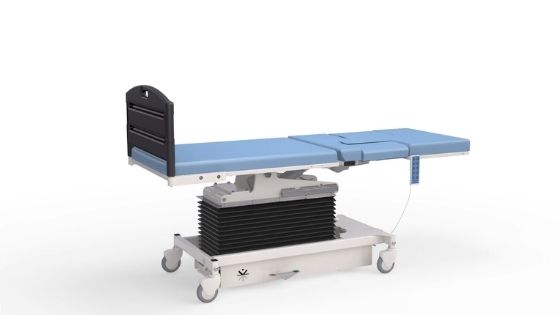A sonographer’s job involves helping patients stay healthy, diagnosing issues, and directing patients towards treatment. But what about a sonographer’s own health? Though most don’t realize it, being a sonographer can take a serious toll on the body. Here are some ways sonographers can reduce musculoskeletal pain and injury.
What Causes Musculoskeletal Pain and Injury?
A musculoskeletal injury, or a musculoskeletal disorder, is pain or injury caused by overuse or incorrect use of muscles and the body. In sonographers, these pains and injuries are usually caused by unnatural, repetitive movements and sustaining an incorrect posture for a long period of time. While these pains can be annoying, if the issues causing these pains are not addressed, they can quickly morph into full-blown injuries or disorders.
Ways To Reduce Musculoskeletal Pain and Injury
Fortunately, there are several ways sonographers can reduce musculoskeletal pain and injury in the workplace. A few of the best methods are described below.
Set up the Workspace Properly
The first step to reduce musculoskeletal pain and injury is to set up sonographer workstations properly. One of the main sources of discomfort and pain for sonographers is the irregular stretching and twisting that they must do in an improperly arranged workspace. Sonographers often must operate their equipment with one hand while scanning a patient with the other. In a proper, healthy workspace setup, sonographers should be able to reach their workstation and the patient without twisting or extreme reaching.
Use Ergonomic Medical Equipment
Another way to reduce pain and injury in the medical field is by providing ergonomic equipment for all medical workers, including sonographers. Ergonomic medical equipment will make repetitive tasks easier on sonographers, promoting comfort and good posture. For example, a lightweight probe will be easier on a sonographer’s wrist than a heavier one during the repetitive task of scanning a patient. Likewise, an adjustable vascular table will allow sonographers to position patients at a height that allows for a comfortable working position.
Practice Good Posture
Keeping good posture is incredibly important to avoiding injuries for sonographers. Sonographers must keep their bodies in natural positions while performing their duties. Avoid leaning on equipment for long periods of time, overextending arms, necks, and shoulders, or twisting the neck and back at unnatural angles. To avoid injuring the hand and wrist, sonographers should also make sure to hold their probes with the correct grip.
If sonographers follow these tips for reducing musculoskeletal issues in the workplace, they will endure less inconvenience, pain, and injury during the course of their careers.

